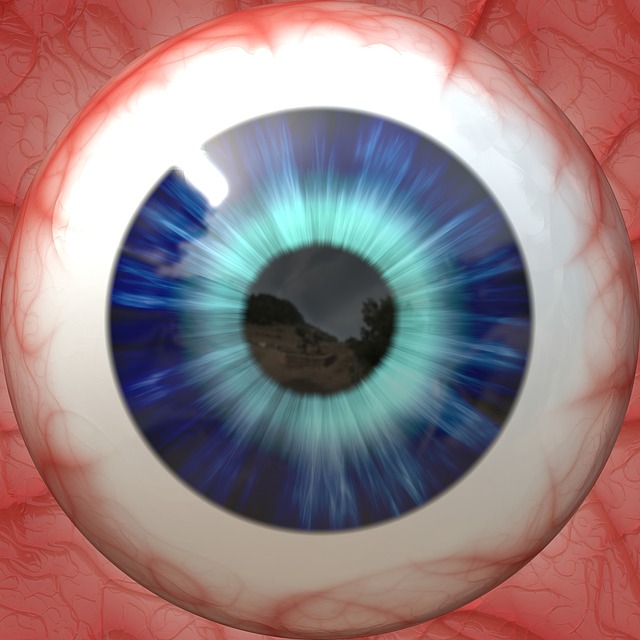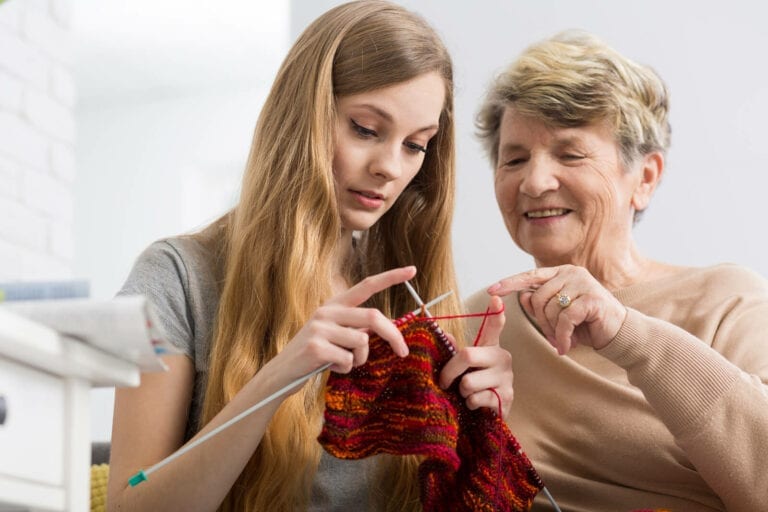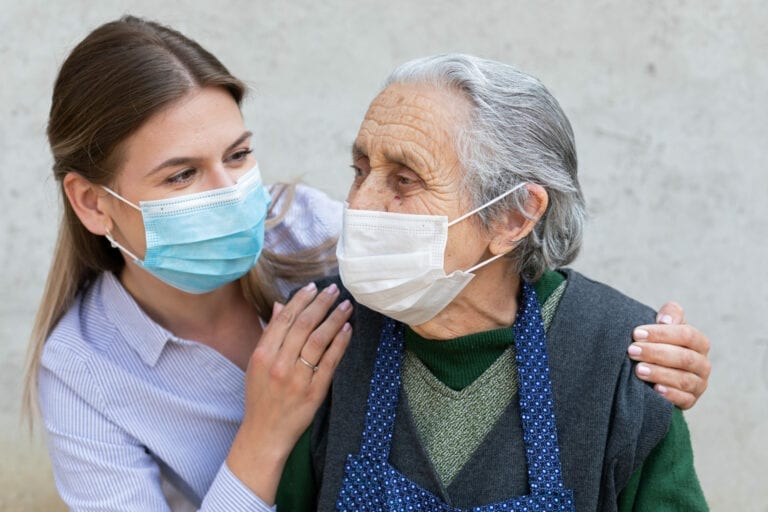Are you worried about your grandparent’s macular degeneration? If so, you’re not alone. Macular degeneration is becoming increasingly common as people get older. Thankfully there are ways to protect them from age-related macular degeneration.
From adopting a healthy diet and exercising regularly to following a good eye hygiene regime, there’s no shortage of advice. But how do you know which diets and outré wellness trends are proper for them? How do you know where to start?
Have you ever seen these brown patches or spots in your grandparent’s vision? This is because of age-related macular degeneration. It leads to a breakdown of the macula, an area at the retina’s center. This causes a gradual loss of central sight, which is different and separate from other eye problems.
Here we are going to describe what you need to know about the treatment and what you can do to protect the eyes of your loved ones! So without further ado, let’s get started.
What Is Age-Related Macular Degeneration?
Age-related macular degeneration is a condition that causes the breakdown of light-sensitive cells in the center of the retina, called photoreceptors. The retina is a thin layer of tissue that lines the inner surface of the eye. Photoreceptors are responsible for the sharp, central vision needed for reading, driving, and recognizing faces.
The breakdown of the photoreceptors leads to vision loss and can eventually result in blindness if untreated. While age-related macular degeneration affects both eyes, it’s more likely to occur in one eye first.
It’s called age-related macular degeneration because it becomes more common as people age. But you don’t have to be old to get it — AMD doesn’t affect one eye or race more than another.
Age-related macular degeneration may affect one or both eyes. It’s more common in people over age 60 and rare before age 40, but it can occur at any age.
AMD usually develops slowly and may progress for years before causing problems with your vision. It’s essential to have regular eye exams so that you can catch any signs of AMD early and take steps to protect your vision.
What are the types of AMD?
The two most common types of AMD are “dry” and “wet.” Although they have different names, they are both caused by progressive damage to the macula.
1. Dry AMD
In dry AMD, blood vessels beneath the retina begin to grow abnormally. The abnormal blood vessels leak fluid or blood into the area around the macula, damaging it over time. As the disease progresses, scar tissue forms on top of the retina (called drusen), which can interfere with vision.
2. Wet AMD
In wet AMD, abnormal new blood vessels grow from beneath your retina into layers behind it. These new blood vessels can leak fluid or blood and cause scarring on your retina’s surface. Both dry and wet AMD leads to loss of central vision and may cause blindness if not treated properly.
How common is AMD?
AMD is more common among people with a family history of AMD, who are overweight or obese, have high blood pressure or diabetes, smoke cigarettes, or have had cataract surgery with intraocular lens implants.
The prevalence of AMD increases with age; almost 40 percent of those aged 75 and older have some form of AMD.
The good news is that many people don’t need treatment for mild or moderate cases of AMD. However, they may benefit from lifestyle modifications and other treatments that help slow down or prevent the progression of the disease.
But treatment is often recommended when vision loss starts to interfere with daily activities like driving or reading.
What are the symptoms of AMD?
The most common symptoms of AMD are blurred vision, difficulty reading, and loss of color vision.
For some people, early signs of AMD are a gray or hazy spot in the center of their field of vision that may slowly grow larger. Sometimes, it’s possible to see this spot without glasses or contact lenses. This condition is called “dry” AMD because it does not involve fluid buildup behind the retina.
For other people, early signs of AMD include:
- A small blind spot in the center of your field of vision that worsens over time and can eventually take away most or all central vision.
- Difficulty seeing out of only one eye due to an abnormality on only one side of your retina.
- Difficulty distinguishing between shades of gray. This may make it harder to see objects that are less distinct or in dim light.
- Difficulty recognizing faces and facial expressions. This can cause embarrassment when talking to people you know, especially in a crowd or at a distance from them.
What Are Risk Factors For AMD?
AMD is a complex disease with many risk factors. Some of these are modifiable, such as age and genetics, and others cannot be changed.
The following are some of the most critical risk factors for AMD:
1. Age
Age is the most critical risk factor for AMD. As people age, their eyes gradually lose the ability to focus on near objects and develop other symptoms of AMD.
3. Family History of AMD
A family history of AMD increases your risk of developing this condition. If you have a parent, brother, or sister with early to intermediate age-related macular degeneration (AMD), you have a 1 in 10 chance of developing it yourself. If your father or mother developed AMD before age 60, you have a 1 in 5 chance of developing it yourself.
4. Race
People who are Caucasian have an increased risk of developing AMD compared with those who are Asian or African American/Black.
5. Nutrition and Diet
Certain foods may reduce your risk of AMD, while others may increase it. A healthy diet may also help prevent further vision loss from already-developed AMD.
6. Exposure to Ultraviolet Radiation (UV)
The sun’s rays break down chemicals in the retina that help protect against damage caused by UV light, which can lead to macular degeneration or worsen existing macular degeneration (AMD).
How do I know if I have AMD?
The best way to tell whether someone has age-related macular degeneration (AMD) is by having an eye exam. The doctor will look into your eyes and ask questions about your vision.
Your doctor will also check to see if there are signs of AMD in your retina, the lining at the back of your eye that senses light.
The retina can have many different types of problems. Some people with AMD have only one area where the vision is blurry, and others may have patches or spots that are blurry or dark.
The doctor can tell whether AMD causes a spot or patch by looking at the retina through a magnifying lens called a slit lamp.
If you have their eye examined and find signs of early AMD, it’s essential to get regular follow-up exams every year so that any changes can be caught early on and treated before they cause any more problems with their sight.
What Should They Eat To Help Prevent Or Treat AMD?
AMD is a disease that slowly destroys the macula, the eye’s central vision. It can lead to blindness in both eyes. There’s no cure for AMD, but eating a diet rich in nutrients known to protect against AMD can help reduce your loved one’s risk of developing the disease.
No one food can prevent or cure macular degeneration. But there are foods high in antioxidants, like blueberries and spinach, that may help protect the macula against damage.
The following foods and nutrients have been shown to help prevent AMD or slow its progression:
- Carrots, sweet potatoes, and other yellow-orange fruits and vegetables. These foods are high in antioxidants called carotenoids, which may protect against AMD.
- Eating fish rich in omega-3 fatty acids may help prevent macular degeneration by lowering the risk of heart disease and high blood pressure, two conditions associated with an increased risk of AMD.
- Vitamin C helps protect against oxidative stress and supports immune function — both essential factors in macular degeneration.
- Green leafy vegetables are rich in vitamin C, which helps fight free radicals.
- Olive oil contains polyphenols which may protect against macular degeneration by reducing inflammation in the eye and decreasing oxidative stress.
Can They Take Vitamins To Prevent Or Treat AMD?
Vitamins and minerals are essential to good health. The body needs them to keep organs functioning properly, build new cells and produce energy. And there is some evidence that specific vitamins may help protect against eye disease.
The best way to get vitamins is through a healthy diet. But if you don’t eat a balanced diet or have trouble absorbing nutrients from food, taking supplements can be helpful.
Scientists are studying how specific vitamins might prevent or slow the progression of AMD. However, these studies are still in their early stages, so it’s too soon to know whether they will work in practice.
Two types of vitamin supplements may help prevent or treat age-related macular degeneration (AMD). These are lutein and zeaxanthin, and omega-3 fatty acids.
Omega-3 fatty acids come from fish oil, flaxseed oil, or cold water fish like salmon, mackerel, and sardines. Antioxidants like lutein and zeaxanthin can prevent abnormal blood vessels from forming under the retina, leading to vision loss from AMD. Omega-3 fatty acids may also reduce inflammation in the eye caused by AMD.
How Does An Eye Doctor Diagnose Age-Related Macular Degeneration?
The first step in diagnosing age-related macular degeneration is a dilated eye exam. This eye test uses special drops to enlarge your pupils so the doctor can see inside your eyes more clearly.
The next step is for them to have a fluorescein angiography, which helps doctors determine whether there are any abnormalities in blood vessels in the retina and other parts of the eye. This involves injecting a dye into their vein and then taking pictures of their retina with special equipment called angiography machines.
If you still have questions about how your doctor diagnosed your loved ones, talk with them again about what was done during the examination and how he came up with his diagnosis.
How Can I Lower the Risk Of Getting My Grandparent’s Age-Related Macular Degeneration?
It’s the leading cause of blindness in people over age 50, and it affects 1 in 10 Americans 50 years and older.
There’s no treatment for age-related macular degeneration, but there are ways to lower your risk of getting it. Here are some tips:
· Get Regular Eye Exams
Your doctor will look for signs of AMD during a comprehensive eye exam. If you have diabetes or high blood pressure, get your eyes checked more often than usual.
· Protect Your Eyes from Ultraviolet Light
UV light can damage the retina, which could lead to AMD. Wear sunglasses that block UVA and UVB rays when outside for long periods, especially between 10 a.m.-4 p.m., when sunlight is most vital and can penetrate the eye more deeply. Choose glasses with 100 percent UVA/UVB protection to ensure maximum protection against UV radiation.
· Exercising Regularly
Exercising regularly helps reduce body fat and increase muscle strength, which can help prevent falls in older adults. Exercise also improves blood flow throughout your body, which helps keep your retina healthy by reducing the risks of developing AMD.
· Maintaining a Healthy Weight
Maintaining a healthy weight throughout life is essential in preventing many diseases, such as heart disease, type 2 diabetes, and high blood pressure. Research shows that overweight people are at a higher risk of developing AMD than their normal-weight counterparts.
Summing Up!
So what have we discovered about age-related macular degeneration? First, it’s essential to recognize the symptoms and if you think your loved ones are suffering from AMD. Secondly, it is more than possible to slow the progression of AMD and manage the condition effectively with modern treatment options.
Certain foods, especially leafy greens, and fish, are good sources of antioxidants that can prevent AMD and other eye diseases. B vitamins may also keep this condition at bay.
If you or someone you love is suffering from AMD, knowing what care services to turn to can be challenging. Fortunately, there is a resource available to help. To start with, From Heart Home Care Services, it can help patients and family members find symptom-specific care services in their area. They have an essential directory along with reviews and user feedback, helping create a clearer picture of just what care services can offer survivors with AMD.
Home Care Near Me. Let’s Get Started!
Get Immediate Help with Information, Costs & Payment Options.







